
As night fell, Shen Hongjie, a woodcarver began his workday at a night market in Dunhuang City, in the northwestern province of Gansu.
His Buddhist murals and charming desert landscapes are popular among tourists. Shen is from central China's Hunan Province and has been doing woodcarving in Dunhuang since 2004. He has lost count of the number of pieces he has made and sold. His woodcarvings are even exported, to countries such as the United States, the Republic of Korea and Japan.
"My inspiration and enthusiasm came from a better understanding of tourists and what draws them to Dunhuang and the Silk Road," said Shen, whose sales topped 1 million yuan (150,000 U.S. dollars) last year. Around him are more than 100 craft stalls, crammed tightly into the busy market, traders hawk their wares to tourists who were drawn to the ancient Silk Road post by the magnificent Mogao Grottoes and Crescent Spring, an oasis in the sandy dunes.
The first Silk Road International Cultural Expo opened Tuesday in Dunhuang. Delegates from 85 countries, five international organizations and 66 overseas institutions are gathered in the city to offer suggestions on cultural exchange and intergovernmental cooperation during the two-day event.
"Dunhuang has witnessed communication and integration among different peoples and cultures -- it is an embodiment of the Silk Road spirit that features openness and inclusiveness," said Zheng Binglin, president of the History and Culture School of Lanzhou University. "That is why Dunhuang is the perfect place for such a Belt and Road event," Zheng said.
DUNHUANGOLOGY
Dunhuangology is the study of Dunhuang Manuscripts and grotto art. Over the past decades, scholars and professionals thronged the city to see its splendid cultural artifacts first hand, many of them artists. Minimal, abstract, fauvist, pastoral, European artists from over 20 countries painted white china plates and presented them to the city Monday, a day before the expo opened.
Floros Floridis, a Greek artist who had brought three acrylic paintings to the European art exhibition being held as part of the expo, found Dunhuang painting both "abstract and modern." He said the lines and colors, though drawn hundreds of years ago, shine with modernity.
The exhibition planner Huang Mei told Xinhua that no artistic form is necessarily better than another given country's different cultural backgrounds, especially in Dunhuang where the blending of different elements can be traced back thousands of years.
Deputy director of the expo committee Liang Yanshun said Dunhuang is a rare place -- as it is where four cultures -- Chinese, Greek, Indian and Arabic -- meet. Over 8,000 precious antiques, works of art and bespoke cultural products from national museums and private collections in over 60 countries including France, Mexico, Nepal, Kyrgyzstan, Uzbekistan, Italy, Germany, Greece and Iran are on display, a collective demonstration of cultural achievements along the Belt and Road. "Here in Dunhuang, you have a sense that the ancient Silk Road spirit, which the world needs so badly today, has come back," Huang said.
INDUSTRY BOOM
Ancient Dunhuang was founded in a place where hardly anything grew. But the city's commodity trading market was extremely prosperous. Almost all commodities were foreign -- silver dishes from Rome, spices from India, brocade from Persia.
Frequent trading along the 4,000-mile Silk Road bound countries economically, and stability came out of shared interests. Historical materials repeatedly show that when the trading was at its peak, conflicts were rare in the region.
According to Liang, 10 agreements between Gansu and participating countries and international organizations, along with about 90 cultural cooperation agreements worth over 100 billion yuan will be signed at the expo.
Some 1,000 km from Dunhuang in the province's Dingxi City, Yimei, a folk art company, has joined the "gold rush" of Silk Road-related cultural and creative industry. Its director Jin Aiqin said the company's paper-cut and embroidery products featuring unique Chinese folk custom have drawn a large amount of fans both at home and abroad.
"We had exhibitions in South Africa and the United Kingdom over the last two years, and all the exhibits and souvenirs were snapped up by local audience."
Statistics from the provincial government show cultural industry grew substantially, accounting for 2.31 percent of its GDP in 2015. Seeing the potential and the publicity surrounding the ongoing expo, Shen, the woodcarver, is looking to expand his business.
"In addition to ornamental art, I hope to step into applied art, which can make people's lives easier and more artistic," he said. "With Dunhuang standing in the center stage of a modern Silk Road, I feel like I am conducting business in the center of the world."














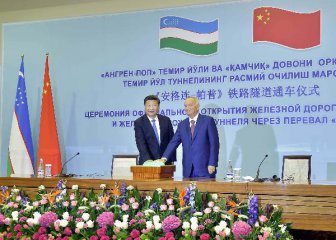
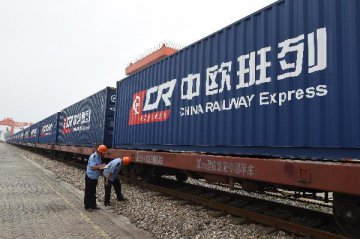
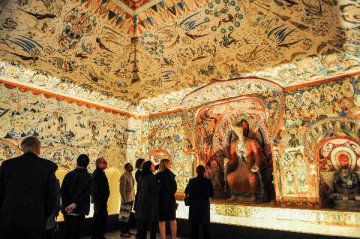
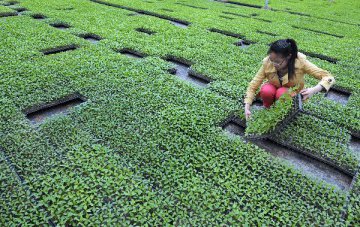
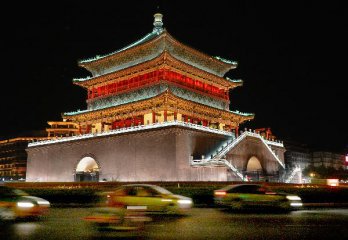


Latest comments